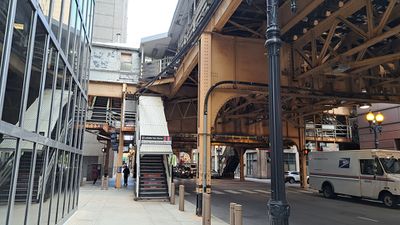Loading map...
{"format":"googlemaps3","type":"ROADMAP","minzoom":false,"maxzoom":false,"types":["ROADMAP","SATELLITE","HYBRID","TERRAIN"],"limit":50,"offset":0,"link":"all","sort":[""],"order":[],"headers":"show","mainlabel":"","intro":"","outro":"","searchlabel":"... further results","default":"","import-annotation":false,"width":"100%","height":"350px","centre":false,"title":"","label":"","icon":"","lines":[{"text":"","title":"","link":"","strokeColor":"#FF0000","strokeOpacity":"1","strokeWeight":"2","pos":[]}],"polygons":[],"circles":[],"rectangles":[],"copycoords":false,"static":false,"visitedicon":"","wmsoverlay":false,"zoom":false,"layers":["transit"],"controls":["pan","zoom","type","scale","streetview","rotate"],"zoomstyle":"DEFAULT","typestyle":"DEFAULT","autoinfowindows":false,"resizable":false,"kmlrezoom":false,"poi":true,"cluster":false,"clustergridsize":60,"clustermaxzoom":20,"clusterzoomonclick":true,"clusteraveragecenter":true,"clusterminsize":2,"imageoverlays":[],"kml":[],"gkml":[],"searchmarkers":"","fullscreen":false,"mylocation":false,"mylocationfollow":false,"mylocationzoom":-1,"scrollwheelzoom":true,"showtitle":false,"hidenamespace":true,"template":"liststn4","userparam":"","activeicon":"","pagelabel":false,"ajaxcoordproperty":"","ajaxquery":"","locations":[{"text":"\u003Cp\u003E\u003Ca href=\"/Adams/Wabash_Station\" title=\"Adams/Wabash Station\"\u003EAdams/Wabash\u003C/a\u003E\n\u003C/p\u003E","title":"Adams/Wabash Station","link":"","lat":41.879542,"lon":-87.626115,"icon":"/images/8/88/Rail20.png"},{"text":"\u003Cp\u003E\u003Ca href=\"/Clark/Lake_Station\" title=\"Clark/Lake Station\"\u003EClark/Lake\u003C/a\u003E\n\u003C/p\u003E","title":"Clark/Lake Station","link":"","lat":41.885757,"lon":-87.63149,"icon":"/images/8/88/Rail20.png"},{"text":"\u003Cp\u003E\u003Ca href=\"/Harold_Washington_Library-State/Van_Buren_Station\" title=\"Harold Washington Library-State/Van Buren Station\"\u003EHarold Washington Library-State/Van Buren\u003C/a\u003E\n\u003C/p\u003E","title":"Harold Washington Library-State/Van Buren Station","link":"","lat":41.876919,"lon":-87.628556,"icon":"/images/8/88/Rail20.png"},{"text":"\u003Cp\u003E\u003Ca href=\"/LaSalle/Van_Buren_Station\" title=\"LaSalle/Van Buren Station\"\u003ELaSalle/Van Buren\u003C/a\u003E\n\u003C/p\u003E","title":"LaSalle/Van Buren Station","link":"","lat":41.876877,"lon":-87.631941,"icon":"/images/8/88/Rail20.png"},{"text":"\u003Cp\u003E\u003Ca href=\"/Quincy_Station_(CTA)\" title=\"Quincy Station (CTA)\"\u003EQuincy\u003C/a\u003E\n\u003C/p\u003E","title":"Quincy Station (CTA)","link":"","lat":41.878728,"lon":-87.633768,"icon":"/images/8/88/Rail20.png"},{"text":"\u003Cp\u003E\u003Ca href=\"/State/Lake_Station\" title=\"State/Lake Station\"\u003EState/Lake\u003C/a\u003E\n\u003C/p\u003E","title":"State/Lake Station","link":"","lat":41.885759,"lon":-87.627938,"icon":"/images/8/88/Rail20.png"},{"text":"\u003Cp\u003E\u003Ca href=\"/Washington/Wabash_Station\" title=\"Washington/Wabash Station\"\u003EWashington/Wabash\u003C/a\u003E\n\u003C/p\u003E","title":"Washington/Wabash Station","link":"","lat":41.882859,"lon":-87.626203,"icon":"/images/8/88/Rail20.png"},{"text":"\u003Cp\u003E\u003Ca href=\"/Washington/Wells_Station\" title=\"Washington/Wells Station\"\u003EWashington/Wells\u003C/a\u003E\n\u003C/p\u003E","title":"Washington/Wells Station","link":"","lat":41.88259,"lon":-87.633861,"icon":"/images/8/88/Rail20.png"}]}

 Brown Line Kimball - The Loop
Brown Line Kimball - The Loop Green Line Harlem/Lake - Downtown Chicago - Ashland/63rd, Cottage Grove
Green Line Harlem/Lake - Downtown Chicago - Ashland/63rd, Cottage Grove Orange Line The Loop - Midway
Orange Line The Loop - Midway Pink Line 54th/Cermak - The Loop
Pink Line 54th/Cermak - The Loop Purple Line Linden - Howard - (Peak hours) The Loop
Purple Line Linden - Howard - (Peak hours) The Loop
![]() Blue Line, especially for those needing elevators or during inclement weather. An out-of-system transfer is required between the
Blue Line, especially for those needing elevators or during inclement weather. An out-of-system transfer is required between the ![]() Red Line and lines serving the Loop, unless transferring at stations outside the Loop. Harold Washington Library Station is the transfer point for those needing elevator access, while State/Lake Station is available for those who can navigate stairs.
Red Line and lines serving the Loop, unless transferring at stations outside the Loop. Harold Washington Library Station is the transfer point for those needing elevator access, while State/Lake Station is available for those who can navigate stairs.
